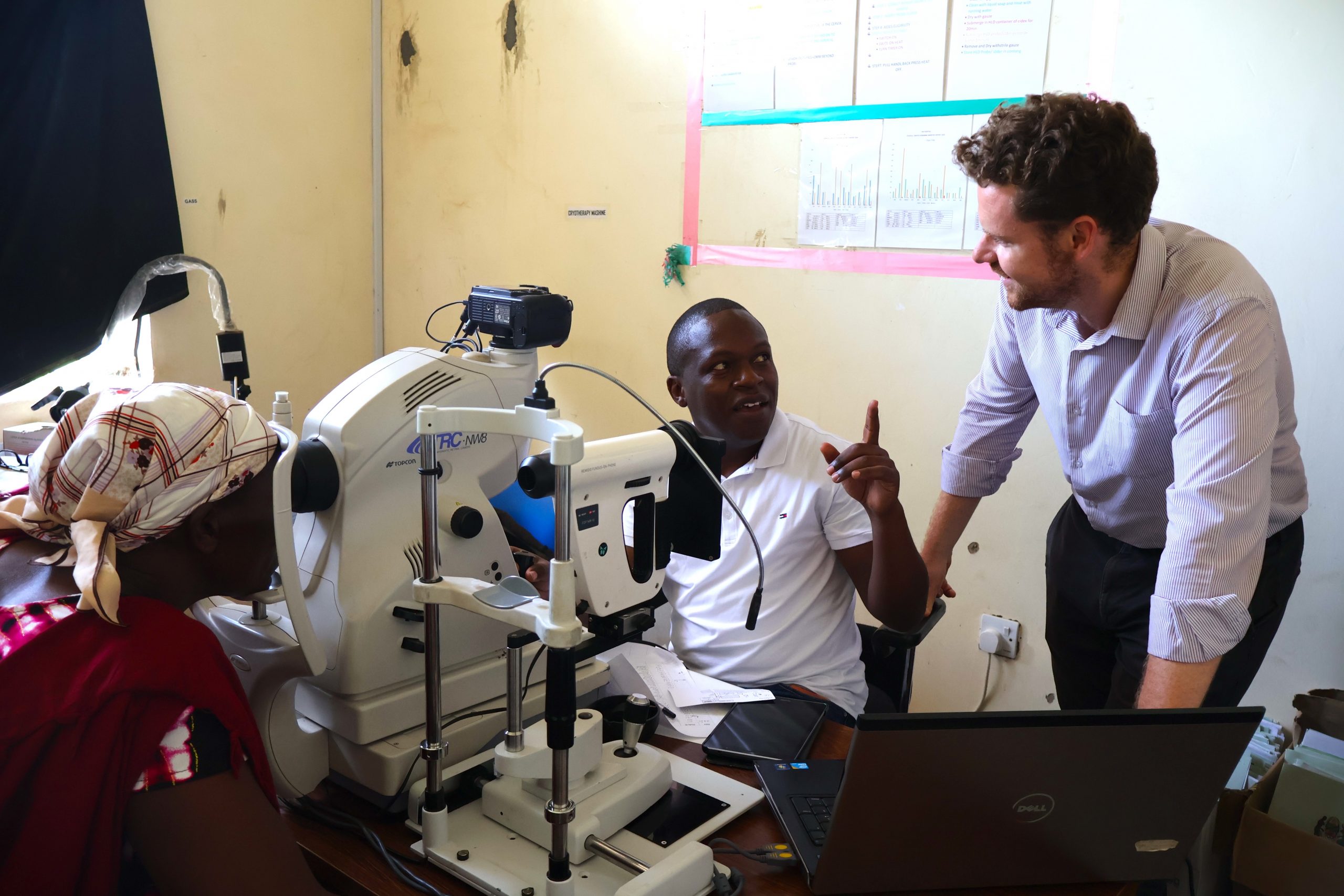Research Impact

Research is at the heart of ICEH’s contribution to global eye health. There are many successful examples of research contributing to policy and practice, including:
Trachoma Surgery Research Changing WHO Guidelines
Trachoma is an eye disease caused by repeated infections with the bacterium Chlamydia trachomatis. The resulting disease is extremely painful, turning the eyelashes inwards towards the eye, eventually leading to blindness. Surgery can be done to correct this stage of the disease and stop its progress.
A paper by ICEH assessed which of two WHO recommended procedures for surgery were superior, identifying that one surgery (known as PLTR) was more successful in reducing recurrence of the disease compared to its counterpart (BLTR).
The work was described as the most important in the field in two decades and led to WHO recommending PLTR alone.
Read the paper: Habtamu E, Wondie T, Aweke S et al. Posterior lamellar versus bilamellar tarsal rotation surgery for trachomatous trichiasis in Ethiopia: a randomised controlled trial. Lancet Glob Health. 2016. https://doi.org/10.1016/S2214-109X(15)00299-5
Laser Treatment for Glaucoma in Tanzania
A clinical trial in Tanzania in 2021 showed that laser treatment has the potential to transform the management of glaucoma in Africa, and to prevent more people from going irreversibly blind.
Globally, the glaucomas are the most frequent cause of irreversible blindness, caused by a build-up of fluid in the eye. Africa has the highest prevalence of the condition and highest prevalence of blindness due to glaucoma. Rates in Sub-Saharan Africa are predicted to nearly double by 2040.
This trial explored the use of a laser treatment, Selective Laser Trabeculoplasty (SLT), against the current standard treatment of timolol eye drops, which have problems with adherence and obtaining repeated doses. The researchers found that SLT successfully reduced eye pressure to normal levels in significantly more patients after one year (61% of eyes) compared to the eye drops (31% of eyes).
Proving that this treatment is more successful than the standard, and at potentially no extra cost for patients, has the potential to revolutionise glaucoma care in Africa.
Read the paper: Philippin H, Matayan E, Knoll KM et al. Selective laser trabeculoplasty versus 0·5% timolol eye drops for the treatment of glaucoma in Tanzania: a randomised controlled trial. Lancet Global Health. 2021. https://doi.org/10.1016/S2214-109X(21)00348-X
Treatment for Aggressive Eye Cancer
A randomised, placebo-controlled trial in four centres in Kenya compared treatment with fluorouracil, a cancer treatment, against placebo for people with ocular surface squamous neoplasia (OSSN), an aggressive eye tumour particularly affecting people living with HIV in Africa.
The trial involved 100 people with the rare cancer, with half receiving fluorouracil and half receiving placebo. The cancer recurred in five of the patients in the treatment group against 17 in the group receiving placebo after one year, a significant difference in reduction of the cancer. The drug was also well tolerated and could be recommended for patients in Sub-Saharan Africa. It was the first large trial to show reduced recurrence in this type of cancer.
Read the paper: Gichuhi S, Macharia E, Kabiru J, et al. Topical fluorouracil after surgery for ocular surface squamous neoplasia in Kenya: a randomised, double-blind, placebo-controlled trial. Lancet Glob Health. 2016. https://doi.org/10.1016/S2214-109X(16)30052-3
Inclusion of eye health in primary health guidelines
Half of all blind children globally don’t need to be. They have either a preventable or treatable condition but aren’t receiving the proper care they need. Primary health care for babies and young children often doesn’t include eye health or training is inadequate.
A study by ICEH trialled including a module on eye heath for primary health nurses as part of Integrated Management of Childhood Illness (IMNCI) training recommended by WHO. The study trained 54 primary health workers who were then assessed before and after the intervention, and at follow-up after 6 months.
The research showed that post-training scores regarding knowledge and confidence of assessing eye care for children was increased significantly. As a result, the module was then included in the national IMNCI health policy in Tanzania.
Read the paper: Malik ANJ, Mafwiri M, Gilbert C, et al. Integrating eye health training into the primary child healthcare programme in Tanzania: a pre-training and post-training study
BMJ Paediatrics Open. 2020. https://doi.org/10.1136/bmjpo-2019-000629
Population Eye Health Surveys
The ICEH team have been integral in assessing the scale of the challenge of eye health in many countries around the world.
We have led multiple national eye health surveys which have provided the evidence for improvements in eye health within countries.
An example is the Nigeria National Eye Health Survey, which examined nearly 14,000 people across the country and assessed the prevalence of sight loss and other demographic factors. The evidence from this survey led to improved national policy for eye care services and multiple new research studies to improve blindness and vision impairment in Nigeria.
We also manage the latest version of the Rapid Assessment of Avoidable Blindness (RAAB), which provides the majority of data for global eye health figures.
